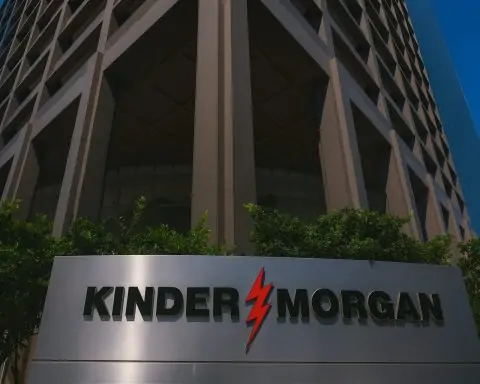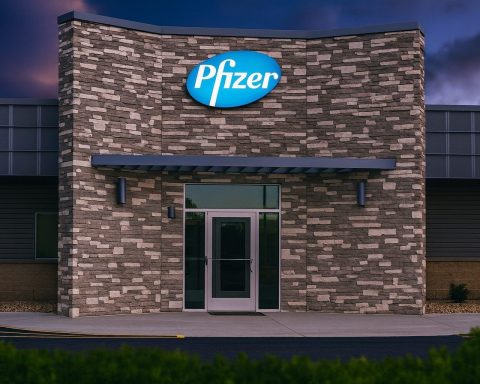Pfizer’s acquisition of Metsera, Inc. (formerly NASDAQ: MTSR) is now effectively complete, Metsera’s stock has been delisted, major index providers are removing the name, and antitrust scholars are using the failed Novo Nordisk bid as a case study in “attempted monopolization.” Here’s a full rundown of what matters today, 17 November 2025, for anyone following Metsera, MTSR, or the obesity‑drug arms race.
1. Where the Metsera–Pfizer Deal Stands Today
Pfizer formally closed its acquisition of Metsera on November 13, 2025, after Metsera shareholders approved a sweetened offer that values the obesity biotech at up to $10 billion. [1]
Key terms of the final deal:
- Upfront cash:$65.60 per Metsera share in cash
- Contingent Value Right (CVR): Up to $20.65 per share in additional cash payments tied to three clinical and regulatory milestones
- Total potential value: Up to $86.25 per share, or roughly $10 billion at the high end of the CVR. [2]
Pfizer’s own press release confirms it has acquired all outstanding Metsera shares, making Metsera a wholly owned subsidiary and adding its obesity and cardiometabolic pipeline to Pfizer’s Internal Medicine unit. [3]
Independent coverage from Reuters characterizes the transaction as Pfizer’s re‑entry into the obesity treatment market, noting that the pharma giant previously scrapped two oral GLP‑1 candidates and is now buying its way back into the class through Metsera. [4]
Digital Health News and biotech newsletters published today and over the last 24 hours echo the same message: Pfizer is betting big on next‑generation GLP‑1 and amylin therapies as it looks beyond its shrinking COVID-19 franchise and looming patent cliffs. [5]
2. MTSR Stock Status: Delisted, Indexed Out, and Last Trading Price
Delisting from Nasdaq
Pfizer’s November 13 press release stated that Metsera shares would cease trading on the Nasdaq Global Select Market at the close of that day’s session. [6]
Yahoo Finance’s historical data now shows MTSR as “delisted effective Nov. 14, 2025”, with no trading beyond that date. [7]
In other words, as of today, November 17, 2025, Metsera:
- No longer trades on Nasdaq
- Exists only as a private Pfizer subsidiary, while former shareholders hold cash and, where applicable, CVRs
Last recorded share price
On the final full trading day before delisting, Metsera closed around $70.50 per share, according to multiple market data providers. [8]
That price sits above the $65.60 upfront cash component and reflects the market’s attempt to assign a present value to the CVR payouts and residual deal risk.
Today’s index moves: S&P and FTSE Russell clean‑up
Index providers are now catching up with the reality that MTSR has vanished from public markets:
- S&P indices: S&P Capital IQ / MarketScreener report Metsera has been removed from the S&P Global BMI Index, S&P Biotechnology Select Industry Index, S&P TMI Index, and related benchmarks, with notices clustered around November 13–16. [9]
- FTSE Russell: A corporate action notice dated November 12 specifies that Metsera will be deleted from the Russell 2000 Equal Weight Index effective at the start of trading on November 17, 2025, explicitly referencing the presence of a CVR as the reason for special handling. [10]
For index funds tracking these benchmarks, the effective result is the same: MTSR is being mechanically removed and replaced by other constituents, solidifying the stock’s exit from mainstream equity indices as of today.
3. Today’s New Angle: Antitrust Scholars Go After Novo Nordisk’s Failed Metsera Bid
A major fresh story dated November 17, 2025 comes not from Wall Street but from the competition‑policy world.
In a detailed piece on ProMarket, NYU antitrust scholar Hannah Pittock argues that Novo Nordisk’s rival proposal to acquire Metsera should be seen as “attempted monopolization” under U.S. antitrust law, even though the deal ultimately failed. [11]
Her analysis focuses on Novo’s unusual two‑step contract, which:
- Would have paid Metsera’s shareholders billions upfront, via a non‑voting stake and special covenants, even if regulators later blocked a full takeover. [12]
- Imposed interim restrictions that, according to the article, would have made it significantly harder for any other acquirer—especially Pfizer—to step in during the 30‑month period the agreement covered. [13]
Pittock frames this as a “heads I win, tails you lose” structure:
- If Novo somehow cleared the FTC’s antitrust review, it could complete the acquisition, remove an emerging competitor, and reinforce its duopoly with Eli Lilly.
- If regulators blocked the deal, Novo would still lock in covenants that, in her view, would effectively sideline Metsera as a realistic competitive threat while tying Pfizer’s hands. [14]
This analysis comes on top of earlier news reports that highlighted FTC worries about Novo’s structure and noted that U.S. regulators sent both a letter and a call warning Metsera and Novo about the competition risks—warnings that ultimately tipped Metsera’s board back toward Pfizer’s revised bid. [15]
Even though Pfizer won, today’s commentary suggests the Novo–Metsera episode could become a test case for how enforcers treat “killer” or “non‑acquisition” style deals designed to hobble rivals without necessarily closing.
4. Fresh Coverage Today: Biotech and Health Media Frame the Deal
Several outlets are updating their coverage today and over the last few hours:
- Digital Health News reports that “Pfizer Takes Full Ownership of Metsera in $7B Deal”, emphasizing that the upfront enterprise value is about $7 billion, with the CVR adding up to $20.65 per share for a potential total near $10 billion. The piece spotlights how Metsera’s late‑stage GLP‑1 and amylin assets slot into Pfizer’s obesity strategy and notes that MTSR will be delisted from Nasdaq. [16]
- BiotechSnap’s “Daily Snap – 17 November 2025” summarizes the situation under an “obesity arms race” heading, highlighting Pfizer’s final terms ($65.60 + $20.65 per share), the progression from the original $7.3 billion agreement, and Novo’s failed attempt to outbid with a roughly $9 billion offer. [17]
- HealthCare Middle East & Africa has a feature updated November 17, 2025 describing Pfizer as the winner of a “fierce bidding battle,” and walking through the WSJ‑reported valuation of the deal at more than $10 billion once CVRs are included. The article also underscores the FTC’s role in raising red flags about Novo’s contract structure and notes that Metsera’s board ultimately concluded Novo’s offer carried “unacceptably high legal and regulatory risks.” [18]
Together, that coverage sets the narrative for today: the Metsera story has moved from “who will buy it?” to “what does this mean for obesity competition and antitrust?”
5. Why Metsera Was So Hotly Contested: The Pipeline Pfizer Is Buying
Pfizer is not paying up for current sales—Metsera is a clinical‑stage company with no commercial products yet. The premium instead reflects a stacked obesity and metabolic pipeline:
- MET‑097i – A weekly or monthly injectable GLP‑1 receptor agonist, now moving toward Phase 3. Pfizer’s release describes it as a key asset that complements its Internal Medicine portfolio. [19]
- MET‑233i – A monthly amylin analog being studied as monotherapy and in combination with MET‑097i in Phase 1 trials. [20]
- Oral GLP‑1 candidate – An early‑stage oral GLP‑1 receptor agonist in Phase 1 development. [21]
- Preclinical hormone programs – Multiple nutrient‑stimulated hormone (“NuSH”) analog programs aimed at obesity and related cardiometabolic conditions, supported by Metsera’s HALO peptide‑lipidation platform, which is designed to extend half‑life and enable convenient dosing. [22]
Reuters notes that MET‑097i has already produced mid‑stage data showing up to ~14% weight loss, positioning it as a potential rival to weekly injectables like Novo Nordisk’s Wegovy and Eli Lilly’s Zepbound. [23]
For Pfizer, this pipeline helps:
- Offset an expected $17–18 billion annual revenue hit from key products going off patent between 2026 and 2028. [24]
- Re‑establish a foothold in weight‑loss drugs after its earlier internal GLP‑1 projects were abandoned for safety reasons. [25]
6. Recent Fundamentals: Metsera’s Q3 2025 Before the Takeover
Before the deal closed, Metsera continued to behave like a typical pre‑revenue biotech: heavy R&D spend, widening losses, and investors focused on clinical data rather than quarterly sales.
Public earnings trackers show that for Q3 2025, Metsera reported: [26]
- EPS: –$1.11, missing the consensus estimate of –$0.63
- Earnings release date: November 12, 2025
- Associated 10‑Q: Filed and available through SEC and broker portals
In practice, though, Metsera’s stock price in recent weeks has been driven far more by takeover headlines than by quarterly numbers, as illustrated by the sharp moves around each new Pfizer or Novo Nordisk bid. [27]
7. Shareholder Lawsuits and Fairness Investigations
As is common in large biotech takeouts, shareholder‑rights law firms are circling the transaction:
- Kahn Swick & Foti (KSF) announced on October 23, 2025 that it is investigating whether the original Pfizer cash‑plus‑CVR package adequately valued Metsera and whether the board ran a proper sale process. [28]
- Johnson Fistel similarly disclosed an investigation into the fairness of the Metsera sale, flagging that the earlier deal terms were below some Wall Street price targets and questioning whether shareholders are receiving full value. [29]
These investigations do not automatically mean the deal will be unwound; they typically seek additional disclosures or, in some cases, incremental consideration through settlements. Still, for former MTSR holders, it’s part of today’s backdrop.
8. What All This Means for Investors Today
If you were a Metsera (MTSR) shareholder
- Your MTSR shares have been converted into:
- $65.60 in cash per share, paid at closing, plus
- A non‑listed CVR that may pay additional cash (up to $20.65 per share) if specified Metsera programs hit agreed clinical and regulatory milestones. [30]
- Trading in MTSR is over. Any residual “Metsera exposure” in your portfolio now lives inside Pfizer (PFE) and in the uncertain value of that CVR. [31]
- If you held MTSR via an index ETF (Russell or S&P small‑cap/biotech), your fund will have sold the stock as part of index rebalancing tied to today’s and last week’s index deletions. [32]
For any individual tax, legal, or trading decisions, you should check your brokerage account statement and, if needed, consult a qualified advisor. This article is for information only and is not financial advice.
For Pfizer, Novo Nordisk, and the obesity-drug race
- Pfizer now owns one of the more promising next‑gen GLP‑1 / amylin portfolios and has signaled that the deal will be dilutive through 2030 as it ramps late‑stage development spend. [33]
- Novo Nordisk, despite losing Metsera, has revealed both its appetite for riskier deal structures and its willingness to push the boundaries of antitrust scrutiny—attention that may now boomerang back on it via today’s ProMarket debate and any follow‑up from regulators. [34]
- More broadly, the Metsera saga confirms that the GLP‑1 obesity space is in full arms‑race mode, with regulators increasingly willing to scrutinize deals that look like they might entrench dominance or neutralize emerging competitors. [35]
9. Quick FAQ for November 17, 2025
Is Metsera stock (MTSR) still tradable?
No. MTSR has been delisted, and trading ceased following the November 13 close. [36]
Why am I still seeing MTSR in some price tools?
Some platforms still display the last price (~$70.50) for reference, but this is historical only and not a live tradable quote. [37]
How will I know if the CVR pays out?
CVRs typically pay only if certain milestones (e.g., Phase 3 success or approvals) are met. Pfizer will disclose progress in its SEC filings and investor communications; your broker will handle any payouts if they occur. [38]
References
1. www.reuters.com, 2. www.businesswire.com, 3. www.businesswire.com, 4. www.reuters.com, 5. www.digitalhealthnews.com, 6. www.businesswire.com, 7. finance.yahoo.com, 8. www.marketscreener.com, 9. www.marketscreener.com, 10. research.ftserussell.com, 11. www.promarket.org, 12. www.promarket.org, 13. www.promarket.org, 14. www.promarket.org, 15. www.healthcaremea.com, 16. www.digitalhealthnews.com, 17. www.biotechsnap.com, 18. www.healthcaremea.com, 19. www.businesswire.com, 20. www.businesswire.com, 21. www.businesswire.com, 22. www.businesswire.com, 23. www.reuters.com, 24. www.reuters.com, 25. www.reuters.com, 26. public.com, 27. www.fool.com, 28. www.businesswire.com, 29. www.globenewswire.com, 30. www.businesswire.com, 31. finance.yahoo.com, 32. www.marketscreener.com, 33. www.businesswire.com, 34. www.promarket.org, 35. www.reuters.com, 36. www.businesswire.com, 37. www.marketscreener.com, 38. www.businesswire.com










